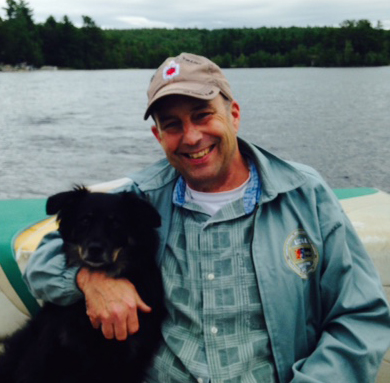
Testifying for Adirondack Clean Water Infrastructure
By: David Miller - Adirondack Council Clean Water Program Coordinator
Thursday, January 6, 2022
On December 10, 2021, I had the privilege to testify before the New York State Senate on clean water infrastructure needs and programs in the Adirondacks. I summarized my full testimony submitted prior to the hearing, which outlined the successes, needs, and challenges we face to protect our Adirondack lakes, rivers, and streams. My primary focus was clean water infrastructure, meaning the sewer plants and sewer lines that are in desperate need of repair, upgrading, or replacement in communities across the Adirondack Park.
Unique Needs of the Adirondacks
I reported on the success of the New York State Clean Water Grant Fund, which has provided now with new grants announced in December approximately $80 million to Adirondack communities over the past five years to make these projects feasible. I also discussed the hundreds of millions of dollars of work that still needs to be done. For the future needs of these communities to be met and our waters protected, more state funds must be invested in Adirondack communities as well as newly enacted federal infrastructure funds. Many of these communities have a very small use base for their sewers, a low tax base for their services, and a workforce that falls under the state median income levels. Under these conditions, they are known as hardship communities because they lack the resources or bonding ability to meet the costs of a major clean water project even under current state grant matching requirements.

Hardship Communities
These communities can and will pay their fair share, but the question remains what their fair share is under their hardship condition. It is a different conversation of sewer rates in these communities than other parts of the state where those same costs are spread across thousands and, in some cases, tens of thousands of households.
For example, the Town of St. Armand, Essex County, has 338 households on their sewer system, and they need to spend $10 million to fix their sewer lines. The current state grant program only provides 25% of project cost, but St. Armands needs at least 75% of the cost to come from state or federal grants to make the project and increased sewer rates affordable to its residents. Even if they got a zero-interest loan over the next 40 years to pay back their balance, as a hardship community, it needs more grant funds to make sewer payments reasonable for their project to move forward. Otherwise, it is just not possible. There are more examples of hardships communities throughout the Adirondack Park. The Adirondack Council understands their plight and stands in solidarity with local government officials and residents to help them get the state and federal support they needed to fund these projects properly.
Adirondack communities also need more technical assistance from New York State agencies to help guide them from the design phase to the project application and then to project construction. Many of these small towns only have a handful of staff with minimal experience managing and financing a multi-million-dollar clean water project. So, state help and expertise are critical.
Everyone’s Adirondack Park
As my testimony states, the Adirondack Park belongs to all the people of New York State. And its communities are unique, and in turn, they need all New Yorkers to help them meet their clean water funding and infrastructure needs. It is time for an Adirondack Clean Water Initiative that brings the resources of multiple state agencies and funding sources to these small communities. In doing so, all can celebrate and do their part in making sure our precious Adirondack waters remain safe and pure while local communities are fiscally solvent. With more issues and examples shared in my full testimony, I hope you will have the opportunity to review it and join us in this fight.

David Miller has been the Council’s Clean Water Program Coordinator since 2016 as a consultant and joined the Adirondack Council staff in January of 2021 as a part-time employee. He has researched and written reports aimed toward clean water solutions for the Adirondacks. David works with other stakeholders on clean water infrastructure needs and septic system pollution issues in the Park. He also assists with the Council’s road salt pollution campaign and the need for expanded water quality monitoring programs in the Park.






